Keep in mind that there are tons of wonderful Bible sites out there where you can test-drive any translation, compare it to one you're already familiar with, that kind of thing. One of the best of these sites is BibleGateway.com, which has about 25 versions in English (depending on whether you count slightly different versions of the NIV as different translations). All of the translations I will mention today are available there. Next week I'll talk more about online Bible reading/study sites, but today I want to talk about the Bible translations themselves. I'm not going to give you a bunch of history on each; you can visit Wikipedia or other sites for that (I'll provide a few links). I'm just going to give my general impressions on each translation, and you can go from there.
King James Version
Wikipedia - Bible Gateway
I talked a lot about the King James Version in my last post; I won't repeat those details today. It's a beautiful, well-respected, accurate translation, and I would never dream of discouraging anyone from using it. For hundreds of years, millions of people have considered it THE Word of God. In fact, if you search Google for about ten seconds, you'll be able to find Web sites run by people who believe it is the only legitimate Bible translation in English. Best quip ever about the KJV: "If the King James Bible was good enough for the Apostle Paul, it's good enough for me!"
The KJV is considered a very literal translation; highly recommended if you're not afraid of the old-timey sentence structure. In fact, some of the things that seem like archaisms (the usage of "thee," "thy," "thou," and so on in addition to "you," for example) are not archaisms but conscious choices by the translators to make it more literal (in standard English, "you" can be either singular or plural; in KJV usage, "thou" is singular and "you" is plural). Despite language that is sometimes clunky by "front page of the New York Times" standards, the King James Version is of high quality and highly respected. It's worth your time.
New International Version
Official - Wikipedia - Bible Gateway
The NIV was almost the only Bible translation that I read for a good decade or more of my life. The English is clear, easy to understand, and for the most part, quite accurate. I have no idea how many times over the years that I heard a minister, preaching from the KJV, correct the translation to what I was looking at in my NIV, but the number is a big one. I even think it could be used from the pulpit; at this point, many Christians are as familiar with the NIV as they are with the KJV. I especially love the Psalms in the NIV; they seem quite musical to me. Over the years, though, the NIV has suffered from some criticism over certain verses, and that plus changes in the English language over the years were reasons for the attempt at releasing an updated NIV called Today's New International Version several years ago, and the new revision of the NIV which is available for reading online right now and which will be released in bookstores this year. To compare the classic 1984 NIV, the 2005 Today's NIV, and the upcoming 2010 revision, visit this page at BibleGateway.com.
The New International Reader's Version deserves a separate mention. This is a revision of the NIV designed for beginning readers. Basically, they simplified the more complex vocabulary, and they cut longer sentences into shorter ones. It's a good translation for young children who are just learning to read, but they will likely grow out of it quickly. One of the ironies of the NIrV Bible we bought for my son when he was five years old (read about that here) was that the dramatized "Bible stories" scattered throughout the text actually were harder to read than the text itself.
New King James Version
Official - Wikipedia - Bible Gateway
If you've ever heard a minister who was reading from the King James Bible but modifying the language on the fly to make it sound a little more "modern," that's a little bit like what you'll get with the New King James Version. The idea was to modernize the language of the classic KJV while still retaining some of the timeless qualities of that translation. I've used NKJV quite a bit myself (although it is not currently one of my actively-used translations) and enjoy and respect it very much. This is the translation my pastor generally uses when he is preaching. The only criticism I have of the NKJV is that the translators used (more or less) the same ancient texts as the translators of the original KJV had used back in the 1600s, which means that improvements in Bible manuscript scholarship since that time were not a big part in the translating process. Ironically, the NKJV has been soundly rejected by those KJV-only folks, even though the KJV they hold in their hands is quite a bit different from the KJV delivered to King James himself centuries ago! The KJV we read today is actually a "new" version of the KJV. If you ever have a chance to spend some time with an actual copy of the 1611 KJV, read a few chapters and then thank your lucky stars that it was re-edited and modernized over time! You would expect the KJV-only folks to have been the biggest supporters of the NKJV, but they apparently hate it.
Use the NKJV if you just like the KJV but want something written in a less-archaic style. Or, use it if your pastor reads from KJV and you can't follow what it means! Your NKJV will be essentially the same in most cases, but you'll be able to understand it better. It will be a little bit like reading captions while listening to someone speaking English with a heavy foreign accent.
English Standard Version
Official - Wikipedia - Bible Gateway
Years ago, the announcement of Today's New International Version translation created a controversy in some Christian circles. The uproar was over something called "gender-neutral" Bible translation. Basically, there are places in the original Bible texts where masculine pronouns are used in a non-gender-specific way. An English equivalent would be the word "mankind," which very rarely only refers to men but usually refers to men and women, the whole human race. An example from the Bible might be when Jesus said "Man shall not live by bread alone," not meaning that only men should depend on the Word of God but that all people should depend on the Word of God. A "gender-neutral" translation might render this phrase "a person does not live by bread alone." This may seem like hair-splitting; the pro-gender-neutrality people would say "That's what the original text means!" and the anti-gender-neutrality people would say "But it's not what the original text says, and people aren't so stupid that you have to rewrite the Bible so they can figure out the pronouns." In 1997, representatives of a number of ministries came together in Colorado Springs, Colorado, and drafted a set of "guidelines" for gender usage in Bible translation. These are known as the Colorado Springs Guidelines, and you can read them here.
The ESV was among the first translations (maybe the first translation) that consciously sought to adhere to these guidelines. The ESV calls itself an "essentially literal" translation, and like the NKJV it seeks to retain the literary beauty present in the KJV, but the ESV uses the latest textual scholarship available at the time of its translation. The ESV is currently my favorite translation for reading and for study, and it is the translation I generally use on this blog and on the related Web site, ScriptureMenu.com. This year (and last year) I'm reading the Bible cover to cover from the ESV Study Bible and the NIV Study Bible, and there have been several times where the NIV Study Bible notes said things like "The same word is used to translate this word and this word in the original texts," and the NIV translates it with two different words but the ESV translates it using the same word. The ESV is sometimes not as fluid to read as the NIV or some other modern translations, but it is not nearly as difficult to absorb as the KJV or the NASB or other literal translations, and I actually like the fact that my brain is forced to engage when I'm reading it. And there are places, particularly in poetic sections like the Psalms and Isaiah, where the ESV preserves powerful metaphors that other translations gloss over.
The ESV is a great translation to have available to you. Make sure you keep one handy, and bookmark ESVonline.org to read it online.
Holman Christian Standard Bible
Official - Wikipedia - Bible Gateway
In the past year or so I have gained a growing respect and liking for the Holman Christian Standard Bible. It seems to me to have a fluid style like the NIV, but it leans a bit more to the literal side of the equation than NIV. My perception is that its fidelity to the original texts is a notch better than the NIV, but readability was not sacrificed for the sake of accuracy. I'm not sure I would recommend the ESV for young children to read, but I think they could handle the HCSB. By way of making a very subjective, emotional comparison, I would classify the ESV as "majestic," the NIV as "friendly" or maybe "non-threatening," and the HCSB as "warm" and "inviting." Any of the three is a good read; all three are currently favorites of mine.
Have an HCSB on your shelf, and bookmark MyStudyBible.com to read the HCSB Study Bible for free!
New American Standard Bible
Official - Wikipedia - Bible Gateway
Just over a year ago, I won a beautiful, and rather expensive, edition of the New American Standard Bible in an online contest. I actually have a little cheap paperback New Testament on my shelf in the NASB translation, but I can't say I've ever spent any time with it. And to be honest, I was hoping to win a nice ESV in the contest! But this Bible is so beautiful that I've been carrying the huge black thing to church every week ever since. Hopefully people don't think I'm carrying a big Bible to impress them! I'm absolutely not. It's a beautiful Bible, and it's a wonderful translation, with some rather surprising features.
The NASB has an interesting lineage. I mentioned before that the 1611 KJV was revised and modernized to what we now use; this revision, made in the 1880s, is called the "Revised Version." In 1901, a revision of the RV called the American Standard Version was released, and in the 1960s and 1970s this ASV was once again revised and released as the NASB. The NASB you are most likely to find in a Bible bookstore is the 1995 revision of this; this is the one I won in the contest. My paperback NASB New Testament is the earlier version. (The ESV is actually a revision of the Revised Standard Version, which is a revision of the ASV, so the two translations are related.)
The NASB is probably the most literal mainstream translation on the market; I find the sentence structure a bit clunky at times, but in general I like it a lot. And as I mentioned, there are a couple of very unique features of the translation, specifically in the New Testament. One thing I find very useful and interesting is that Old Testament quotations in the New Testament are printed in ALL CAPS, so they stand out clearly. This is actually more revealing than you might think, because not every quotation of the OT in the NT is clearly indicated as a quote by the OT authors. It's very interesting to run across the "hidden" ones that would have already jumped out to a Jewish reader. My other favorite feature in the NASB NT is that on occasion, verbs are marked with an asterisk: "*". The asterisk means that the Greek text actually uses a present tense verb in a spot where the English translation uses past tense; the authors used present tense to make the narrative seem more immediate. In formal English we don't switch verb tenses midstream, but it's not unheard-of in colloquial usage: "So I left my apartment and got to the laundromat, and I'm putting my clothes in the washer, and this lady says to me..." I doubt that knowing when one of those tense shifts has occurred will ever provide a deep spiritual insight, but I think it's fascinating to know about it.
New Living Translation
Official - Wikipedia - Bible Gateway
I haven't yet had a chance to really spend a lot of time in this translation, but what little I've read of it, I really liked. The original intention was to create a revision of The Living Bible, a paraphrase written in the 1960s, but eventually it was decided to create a new translation from the original texts. Although it is not as free with the text as an actual paraphrase, the NLT uses the "thought-for-thought" translation philosophy, which makes it easier to read but potentially less accurate at expressing shades of meaning. I did some side-by-side comparison with an ESV recently, and although I did spot the occasional difference that bothered me a little, overall I would consider it trustworthy for reading; for heavy study I would recommend something closer to the "word-for-word" end of the scale. That said, I have a NLT Life Application Bible sitting on my shelf, and I look forward to delving into it in the near future.
The Message
Official - Wikipedia - Bible Gateway
I'll be straight with you: I'm not a fan of The Message Bible. It is considered a paraphrase, not a translation, although it was paraphrased directly from the original languages (as opposed to the original Living Bible, which was paraphrased from the 1901 ASV). There is no effort to match the vocabulary or sentence structure of the original text or other translations; in fact, most editions don't even bother with chapter and verse numberings. The idea is to be almost like a novelization of the Bible. The language is fresh and immediate and colloquial, and it's certainly fun to read, but I don't feel like I'm reading a Bible when I read it; sometimes it almost feels like a parody of the Bible to me. However, I have friends that I respect very much who enjoy reading The Message, and as long as you don't assume that it's something that it's not, I think it's great if it gets people interested in what God's Word has to say.
Bible Translation Continuum
I mentioned before that there is sort of a continuum for Bible translations, with the most "literal" or "word-for-word" translations on one end, and the most "dynamic" or "thought-for-thought" translations at the other end. You could arrange these eight translations roughly in this order, starting with the most "literal" and ending with the most "dynamic":
New American Standard Bible
English Standard Version
King James Version
New King James Version
Holman Christian Standard Bible
New International Version
New Living Translation
The Message
But you don't have to choose just one; if you look around you can find "parallel Bibles" with two, four, or even more of these translations in them, side-by-side for comparison. The most interesting one I've seen is a The Message/NASB Parallel Bible which, with texts from exact opposite ends of the continuum above, must quiver while you hold it, ready to spontaneously split at any moment! But in all seriousness, if you want to carry several texts with you, there are some really good parallel Bibles out there. I'm kind of partial to this one, myself. We'll talk about electronic Bibles in an upcoming post (and I've already mentioned the Bible Gateway), so comparing translations has actually become quite a bit easier in recent years, but sometimes it helps to just have a couple of translations right on the table in front of you.
Again: which one is best? The "read" Bible is the best. Get one of them, and make sure you've "read" it! The Word of God in a book has the power to prop open a door; the Word of God in your heart has the power to transform lives.
"Basic to the Bible's canonical status is its 'inspiration.' This word indicates a divinely effected uniqueness comparable to the uniqueness of the person of the incarnate Lord. As Jesus Christ was totally human and totally divine, so is the Bible." - ESV Study Bible, "Reading the Bible Theologically"
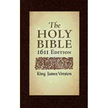
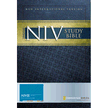
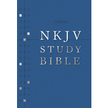
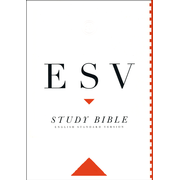
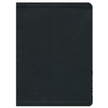
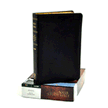






5 comments:
Love this post! Thank you! I have been a NASB person for many years, but received an ESV for Christmas and am currently reading through it and loving it (and have decided to keep it unmarked, unlike my NASB.) I prefer KJV for memorization, but sometimes have my kids memorize something in NASB. I definitely prefer the more literal translations, but have enjoyed The Message on occasion.
Thank you for this informative comparison. I am a NKJV person, but am really liking the NLT lately, for readability. I want to buy an NLT for my 11-year old son, so your review of the iShine Bible was helpful, too.
I have an odd question. How did you get your blog width set? I am using the same exact template on blogger as you (whatistudy.blogspot.com), but my width is so narrow. I would like to widen it if possible.
Thanks!
Thanks to both of you for your comments! Shannon, I honestly don't remember exactly everything I did to tweak the format of the template, but I think it was as simple as modifying the style sheet values for outer-wrapper, main-wrapper, and sidebar-wrapper in "Edit HTML" in the "Design" tab. Yours have exact pixel widths defined (660px, 410px, 220px) and mine have percentages defined (67%, 25%, etc) which means that mine stay put when the browser window expands or contracts. You might just want to widen yours. Your 660 is the total width and the 410 and 220 are the two columns; the other 30 pixels is the space between the columns, so leave that extra 30 pixels. So, you could modify it to 700, 430, and 240, for example. You just might keep track of what you started out with in case something goes wrong (or I guess you could just revert to the stock template and start over.) :)
Thanks so much! I will try tweaking it.
I finally had time to get in and mess with the HTML. Your tips were spot on. It worked. Thanks so much!
Post a Comment